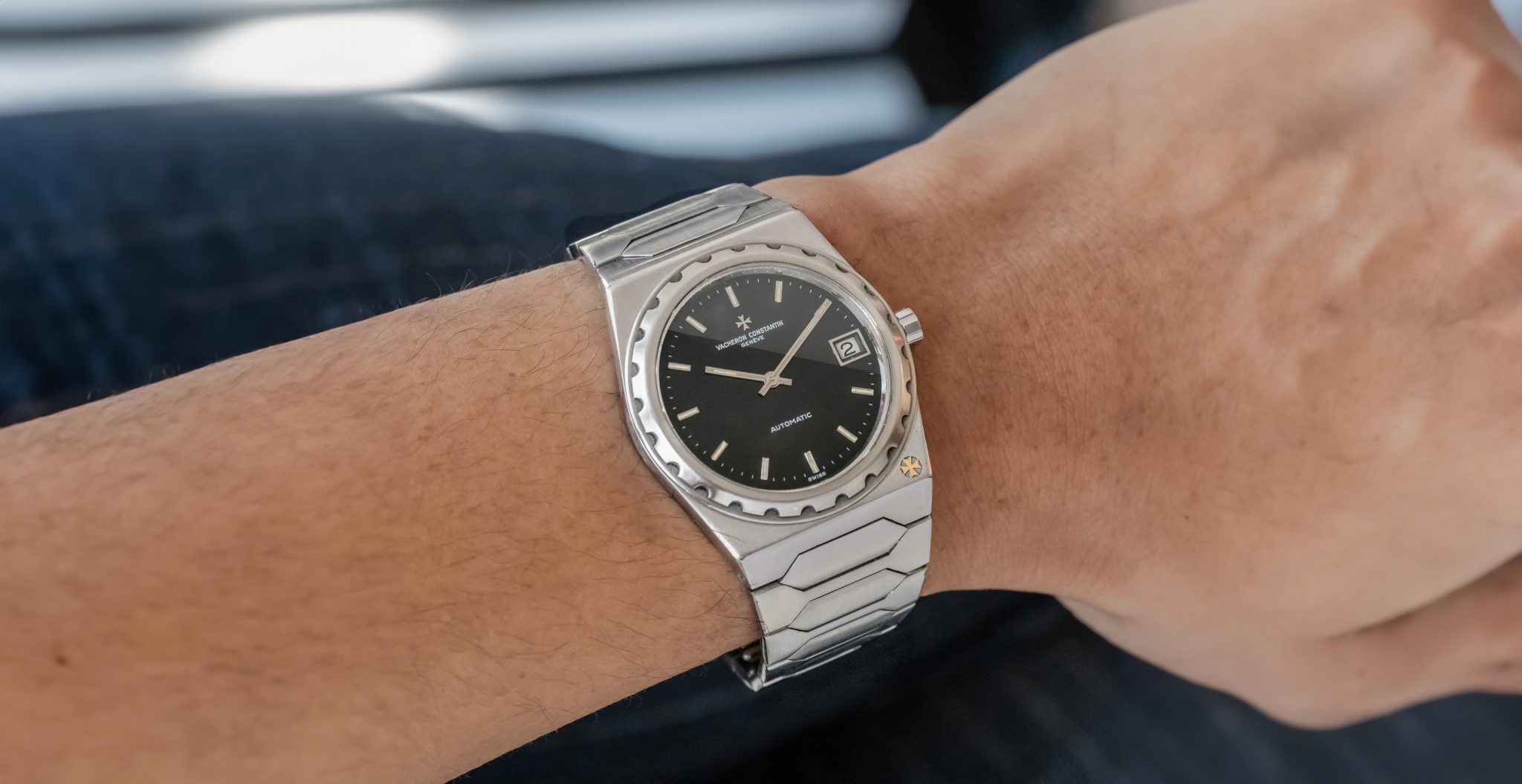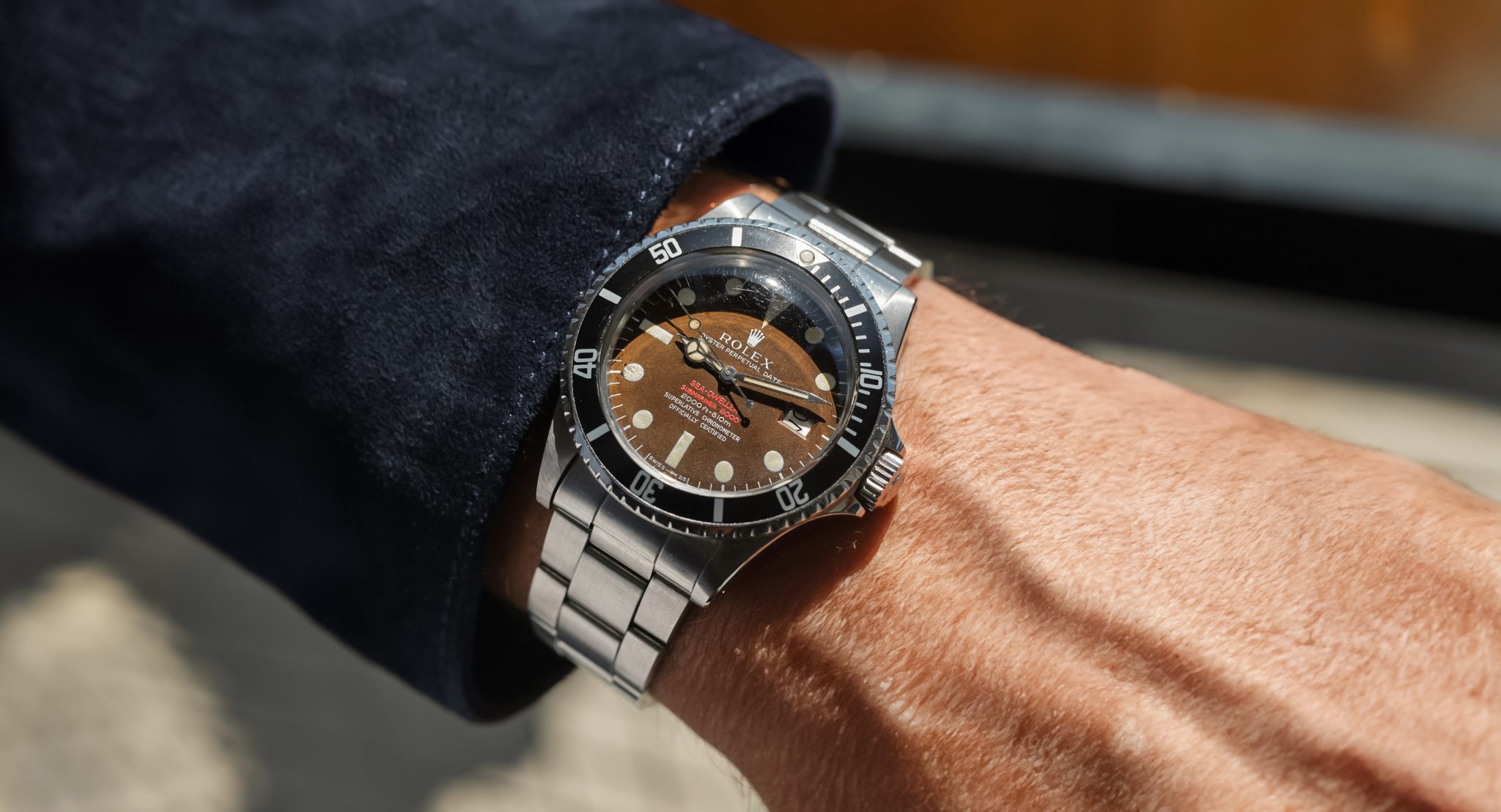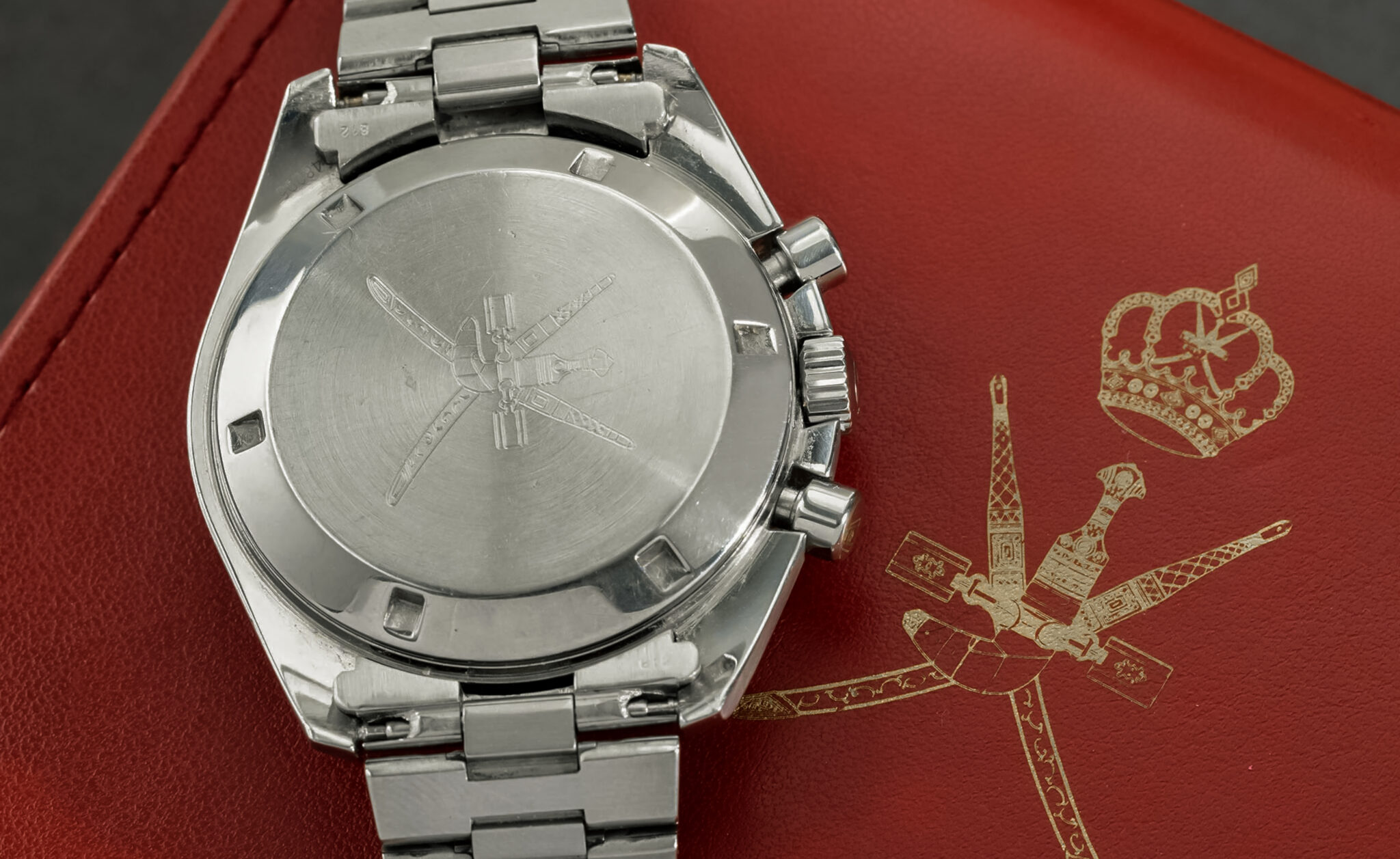
Oman Khanjar 345.0022 Omega Speedmaster
This 345.0022 is like finding out Dame Helen Mirren loved acting in the Fast and Furious and sought out the role deliberately, which is true. Or learning that Chinese takeout boxes unfold into a neat plate with the ball of noodle at its center. Or learning that David Attenborough makes a lovely foie gras. Okay, I might’ve made that last one up. The point is this: it’s so ordinary, you don’t see it coming. It’s a much loved, totally unassuming Speedster from the front. But it’s not; this one is royalty, likely made for the Sultan of Oman to be gifted, and is 1 of just 10 thought to have been made.
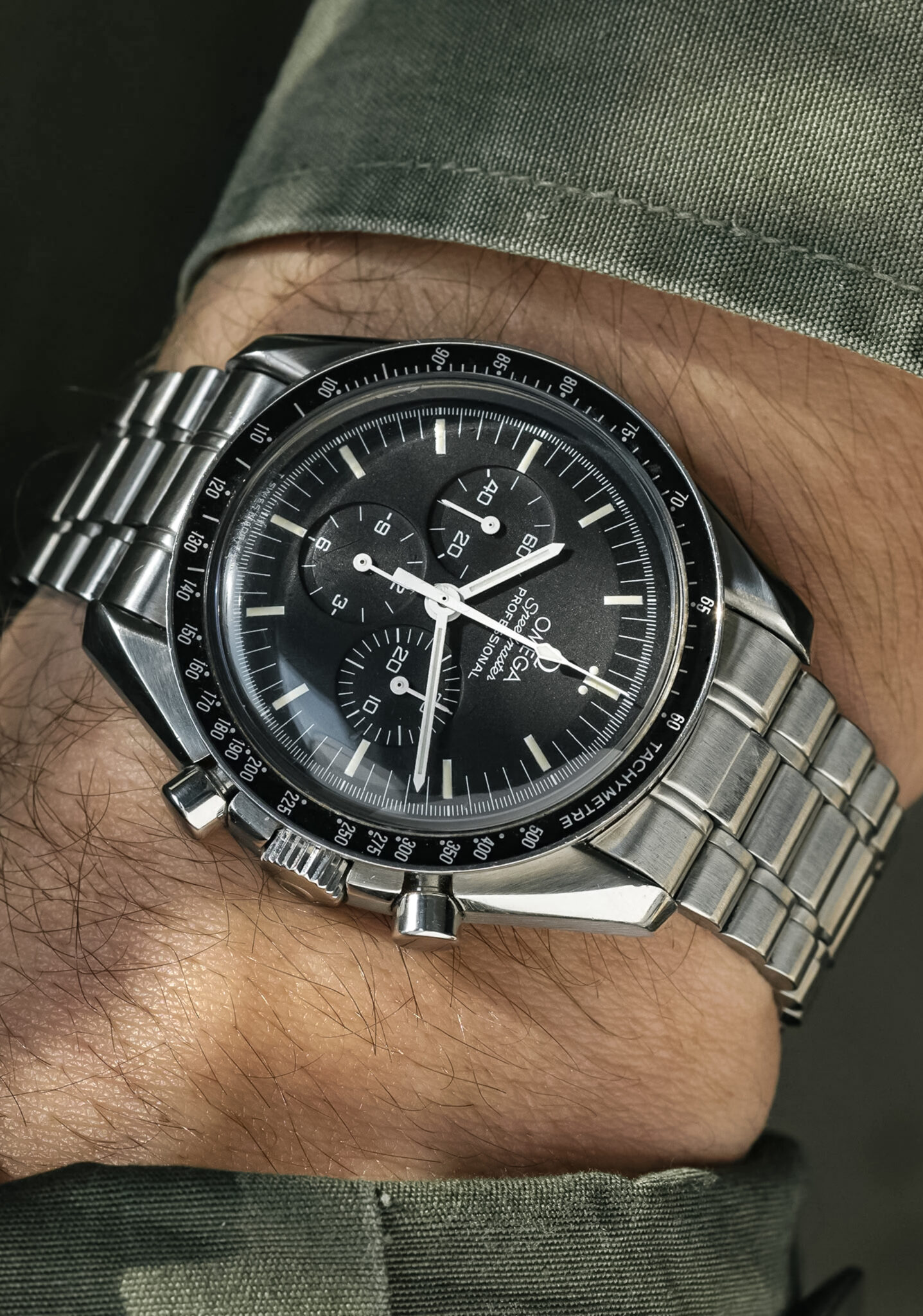
Oman khanjars are known quantities in the Rolex world, but far, far less common from Bienne. Most scholarship seems to point to all known Oman Speedmasters as coming from just one tiny batch of production in 1991. They were all engraved on back and came with a set that featured the khanjar embossed on the leather box. While records seem to indicate that 10 were made, only 5 distinct examples have ever come to market. I just love that something can look so fabulously benign and yet be a grail status Speedmaster.
Logan Baker of Phillips, whose writing and perspectives I adore, posted an article last week calling the white bi-metal Royal Oak the ‘The Ultimate In Stealth Wealth’. Mr. Baker, I have consummate respect for you and it was a great read, but you’re off. That’s fucked; those ROs are uber-wealth parading as wealth. There is no such thing as a stealth Royal Oak (or prove me wrong and wear one around Streatham at midnight, but I wouldn’t recommend it). This, I put to you, is the ultimate in stealth wealth. The last public sale of an Oman Speedy went through Phillips in 2016 and hammered at 30K CHF. I dare say we’re at least double that figure in today’s market. But it looks about an order of magnitude less, and something about that is just delightful.
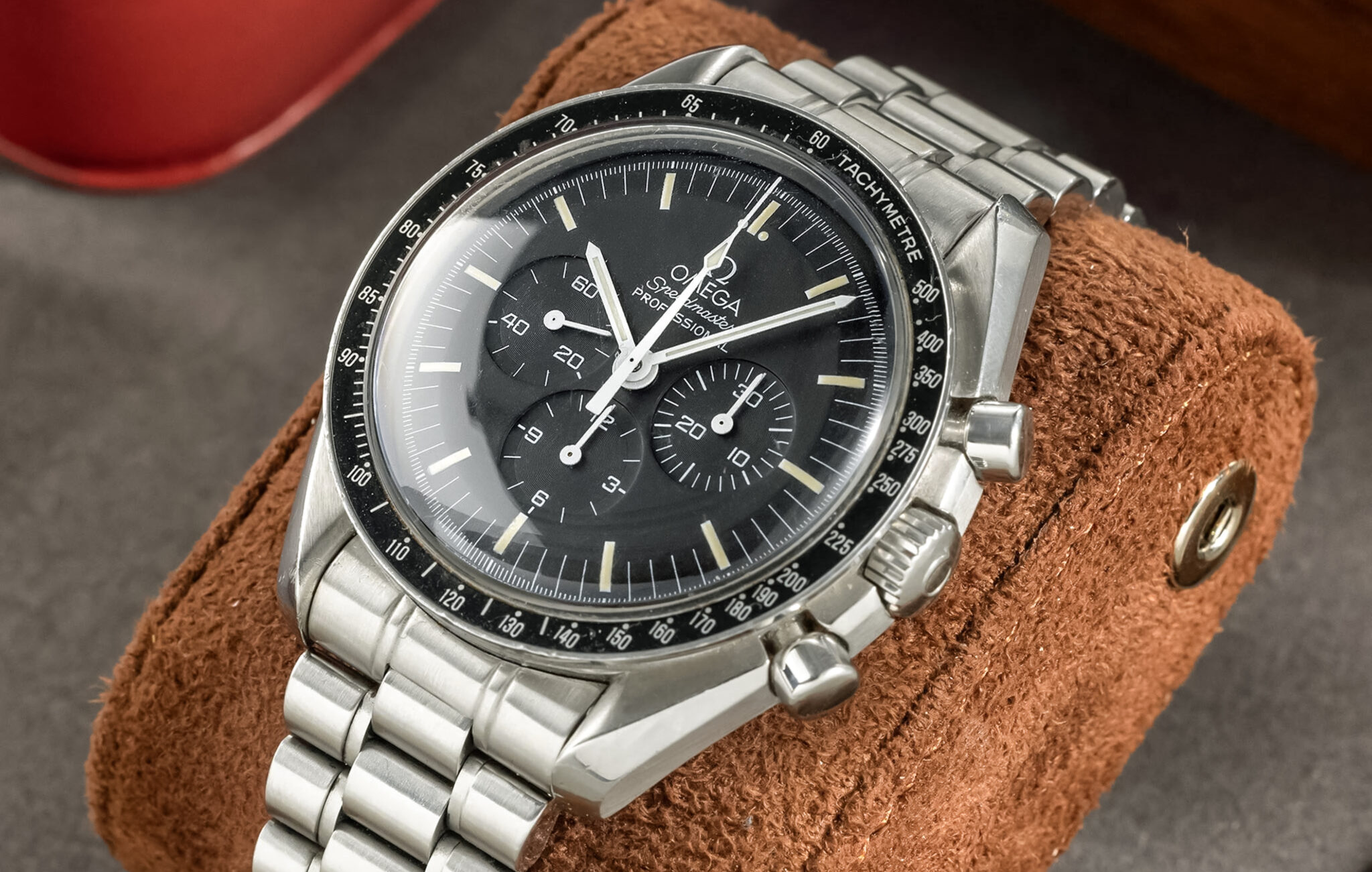
This example’s engraving is crisp and clear, not polished over. The boxes are correct, both outer and leather featuring the khanjar. Most importantly, it comes with an extract noting delivery to Oman in ’93, which is exactly correct for what we know about these. It comes from a well-regarded Dutch retailer.
*Since posting it has come to light that non-crown engraved khajars may have been locally engraved in Oman in period. This was news to the retailer as well. Scholarship here is murky and though the example that went through Phillips at 2016 also lacked a crown, same as this, the director of Omega’s Museum has said those without crowns were likely not done at Omega. The speculation is enough that the retailer has done the right thing and pulled the watch until more is known. Thank you to the Davidoff Brothers for the correction and information.







